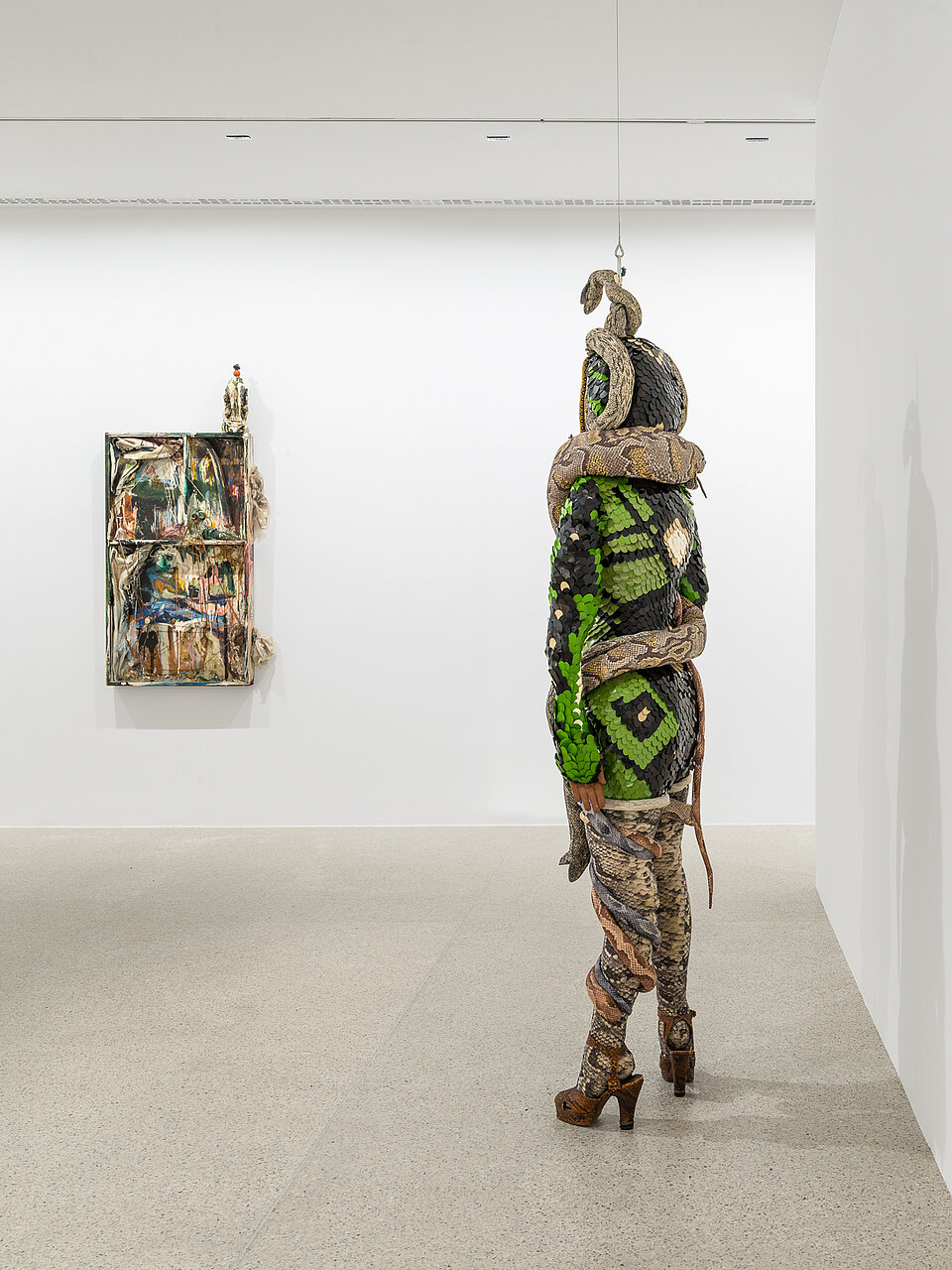Jann Haworth (*1942) was best known during the nineteen-sixties for what she called her “soft sculptures”. She grew up in Los Angeles, California, the daughter of an artist who taught her to sew and an Oscar-winning production designer. In 1961 Hansen moved to London and encountered its emerging Pop Art scene. In 1967, she created the famous album cover for The Beatles’ Sgt. Pepper’s Lonely Hearts Club Band with her then partner, artist Peter Blake.
Snake Lady is from a phase in her oeuvre in which Haworth explored her “Hollywood past,” along with popular fantasy literature and Greek mythology.The sculpture can thus be read as a contemporary Medusa that originated from a flea market find of snakeskin shoes from the 1940s. That sparked the idea of a female body in a snake skin; the human-looking head protrudes from the mouth, the figure’s skin is covered in scales, and the arms are transformed to culminate in a snake’s head or tail.
Haworth used vinyl, a cheap material, for the body of the sculpture, while the head was ceramic, in order to be able to work in greater detail. The combination of hard head and soft, material body is reminiscent of marionettes. Puppets and marionettes, just like sewing and clay or weaving and knitting, are peripheral phenomena whose marginalised existence stems from lingering hierarchical thinking about materials and realms of creative activity. With Snake Lady, Haworth allows this “peripheral” phenomenon to take literal shape in a figure in which the fake, the fantastic, and the feminine merge into a hybrid.

